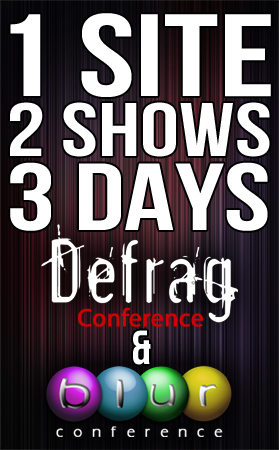I admit that I get a bit tired of the old “war” metaphor in all things IT. Yet, I did find this entry on “the end of software” rather interesting. Basically, the piece highlights how “social software” (enterprise 2.0y things) is getting bought by departments and functionaries that aren’t traditional IT buyers. Further, it goes on to say that this change in pattern is part of a larger trend that will forever alter how enterprises consume “software.”
Is it right? I’m not sure. But the movement itself seems indicative of the “consumerization of IT” wave, and something that is highly relevant to Defrag.
Heading into Defrag 2007, I was absolutely convinced that we’d be dropping the “end-user facing” angle and moving toward “enterprise stuff” (solely) by 2008. Let me be perfectly clear about this: I was FLAT OUT WRONG.
The attendees spoke very loudly and clearly about the fact that they wanted that “end-user” side to things — and not because they weren’t “enterprise people” looking to buy software -not at all. Rather, the motivation came from the fact that these “enterprise people” understood just how important viewing and understanding things which live on the “end-user” side is (plug: yes, we have the smartest group of people around gathering around this.)
These people “get it”; they know that its not what *they* purchase for the enterprise setting that matters, if all of the users (employees) are experiencing, using and even *buying* different things. They get that understanding the relationship between the end-user and enterprise silos is increasingly important. They understand that being familiar with technologies like Lijit or HiveLive can only increase their ability to do their jobs well (and how long is it, really, before someone in the enterprise is utilizing Lijit on internal Sharepoint driven-blog networks? Heck, maybe its already happening - lijit?).
So, the purchasing decision may be shifting and moving, but I don’t think its the shift and move that’s important (then again, I’m not an enterprise software salesman). What’s important is understanding how both realms influence each-other. That understanding leads to getting why “file-based” systems are so different from “people-based” systems. And those issues are something that every IT executive *needs* to wrap their head around yesterday.
For more on this topic, please check out Sam Lawrence’s blog.
There is a point where the future meets the present, and its precisely in discussions like this. Welcome to Defrag.

